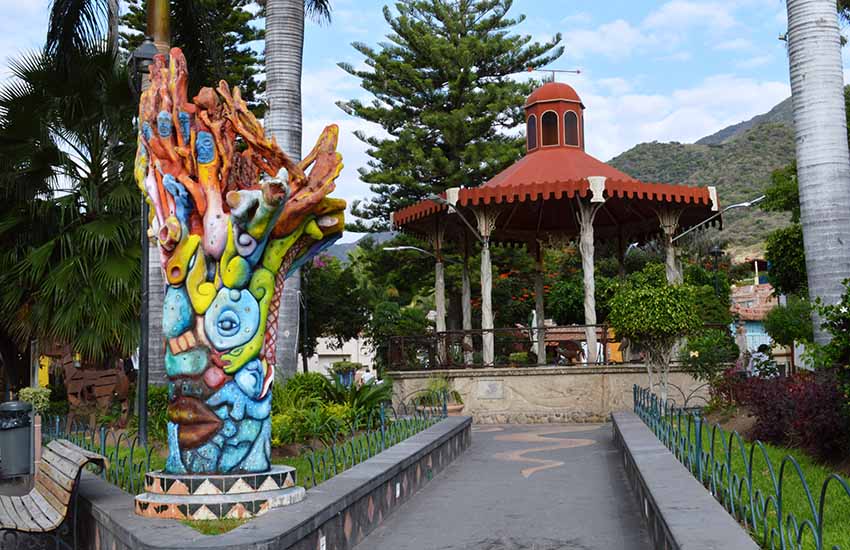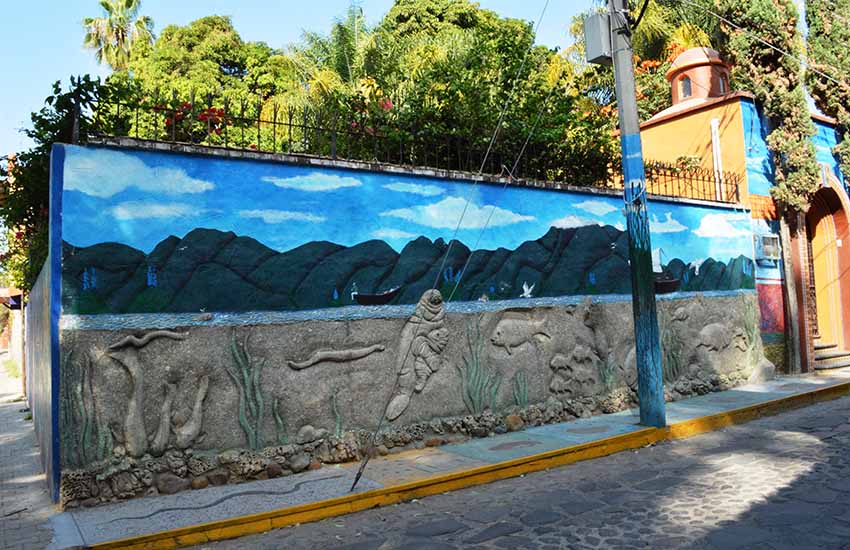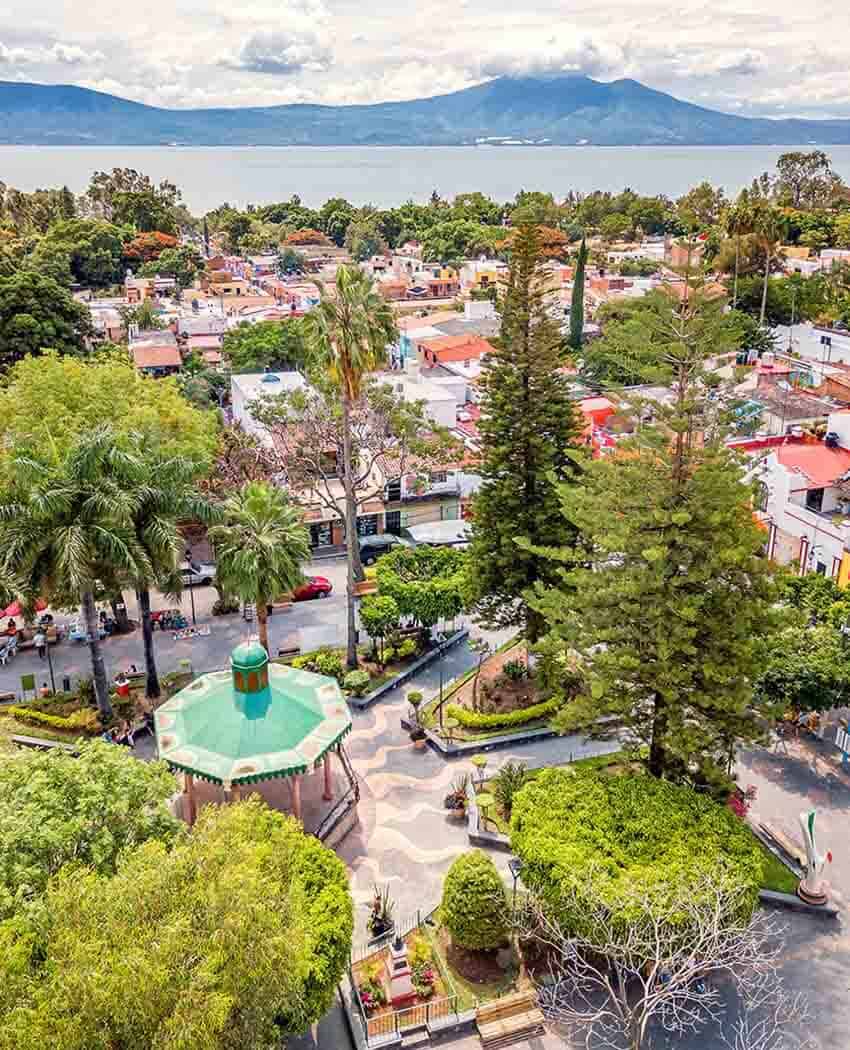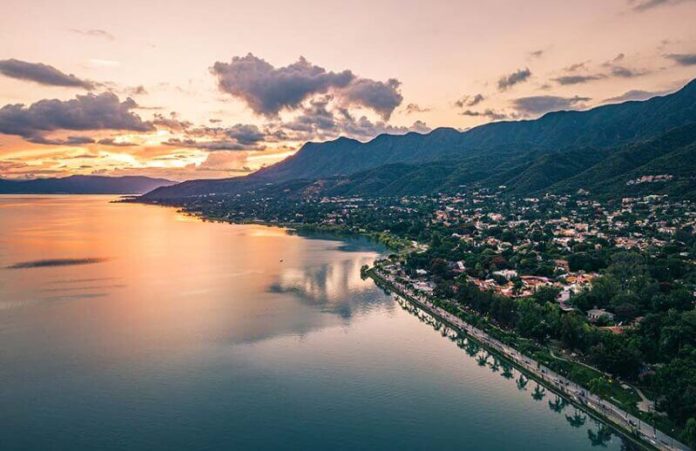So what exactly is a Pueblo Mágico (Magical Town) in Mexico nowadays?
In 2001, the federal government began a wildly successful program to promote quaint historic towns as weekend getaways. What started as a handful of them near Mexico City has grown to 132 in 20 years.
But not without controversy.
In December 2020, the expat enclave of Ajijic, Jalisco, received the coveted designation, but does it deserve to be ranked with the likes of Pátzcuaro, Michoacán, and San Cristóbal de las Casas, Chiapas?
Two main issues exist with the designation: the first is that Ajijic is not a stereotypical Mexican town with centuries-old architecture dominating the center. Instead, what stands out is its cosmopolitan atmosphere and a very visible foreign population that has transformed it considerably.

There are only three buildings in town with historic significance; the rest were demolished long ago as development filled Ajijic with 78 hotels, 136 restaurants and bars serving contemporary Mexican and international cuisines, art galleries and second homes. All this obscures that the town was officially founded in 1531 and was a fishing village for far longer than that.
Ajijic is one of many small towns in the area with gorgeous views of Lake Chapala. Indeed, the lakeside pier and the colorful main square are its main attractions, especially with weekenders from nearby Guadalajara.
Mostly American snowbirds and others have been attracted to move to the area’s near-perfect climate since the 1940s. The Ministry of Tourism estimated before the pandemic that as many as 20,000 foreigners currently make the town their home at least part of the year. These residents, including a significant number of artists, drive much of the cultural scene here, sponsoring the many public murals. They have also repaired and improved a number of public structures and spaces.
As late as 2012, researcher Vair Avota said, “People were saying that Ajijic would never become a Pueblo Mágico no matter how hard they tried and how good it might be — that as a ‘gringo village’ it has been way too transformed.”
Famous last words.
The second issue with the designation of Ajijic as a Pueblo Mágico is that transportation and other infrastructure are nowhere near adequate to handle the number of visitors the town receives now, never mind whatever new influx the designation might bring in the future.

Ajijic sits on a small strip of land wedged between Chupinaya Mountain and Lake Chapala. This fact causes bottlenecks in the town’s center; residents complain about traffic even during the low season.
Growth has taken a toll on the mountain, with new lake-view homes being built ever higher. This was a principal cause of recent flooding in the town proper — because vegetation had been stripped away for development.
Overall infrastructure here is poor, with no updated planning documents since 2011. There is a general lack of regulation. Despite the town having a wealthy population, there are still residents who live without basic city services.
The naming of Ajijic as a Pueblo Mágico came as something of a surprise to residents as the effort was driven entirely by the outgoing mayoral administration with no input from the community.
These authorities succeeded because the requirements for designation have been changed over the years.
Originally, towns had to have qualities like architecture, history and visible manifestations of historic culture, along with specific requirements for tourist and other infrastructure. According to Fernando Mendoza, founding president of the National Coordination of Pueblos Mágicos Committees, those requirements were necessary at first to consolidate the brand.

The first changes to the requirements came after five years, when infrastructure criteria were relaxed in order to allow more towns to get the designation. About seven years ago, requirements were limited further, including those related to architecture and other obvious attractions, as the program became a “social development through tourism” program.
According to Mendoza, the formerly strict requirements favored towns that already had tourism and the resources to pave and widen roads, rehabilitate buildings, bury electrical lines and do other improvements. This left out more marginalized communities from consideration.
Needless to say, marginalized does not really describe most of Ajijic, filled with second homes and retirees with the money and time to spend on community improvement projects. Interestingly enough, it is this international community that is part of the official rationale for making Ajijic a Pueblo Mágico, says Greg Custer of the Lake Chapala Society, the oldest operating organization for expats in Mexico.
You would think that having a prominent foreign population would work against designation, but Mendoza says that other communities with significant numbers of foreign residents, such as Tepoztlán and Loreto, Baja California Sur, are also Pueblos Mágicos.
For both Mexican and foreign residents, opinions about Pueblo Mágico status are highly mixed: those highly in favor of the designation seem to be business owners, although resident John Sillyards says that many of the local artists “are thrilled.”
Resident Daniel Houck worries that several foreign residents are not aware of the potential ramifications. Many residents and others worry that the inclusion of towns like Ajijic devalues the brand and means that the approval process is now all about politics.
But like it or not, Custer notes, Ajijic is now a Pueblo Mágico. For him, what is important now is to decide how the community deals with the designation.
One immediate challenge is to get tourists to visit more than just the pier and the main square, he said. The town needs to diversify its attractions into more parts of town in order to ease traffic and get the benefits of Magical Town status to more areas.
Mendoza agrees that community involvement is the only way to make the Pueblo Mágico designation beneficial. A citizens’ committee to address the coming challenges has been formed, and only time will tell if Ajijic will become a “successful” Magical Town or not.
Leigh Thelmadatter arrived in Mexico 18 years ago and fell in love with the land and the culture in particular its handcrafts and art. She is the author of Mexican Cartonería: Paper, Paste and Fiesta (Schiffer 2019). Her culture column appears regularly on Mexico News Daily.
